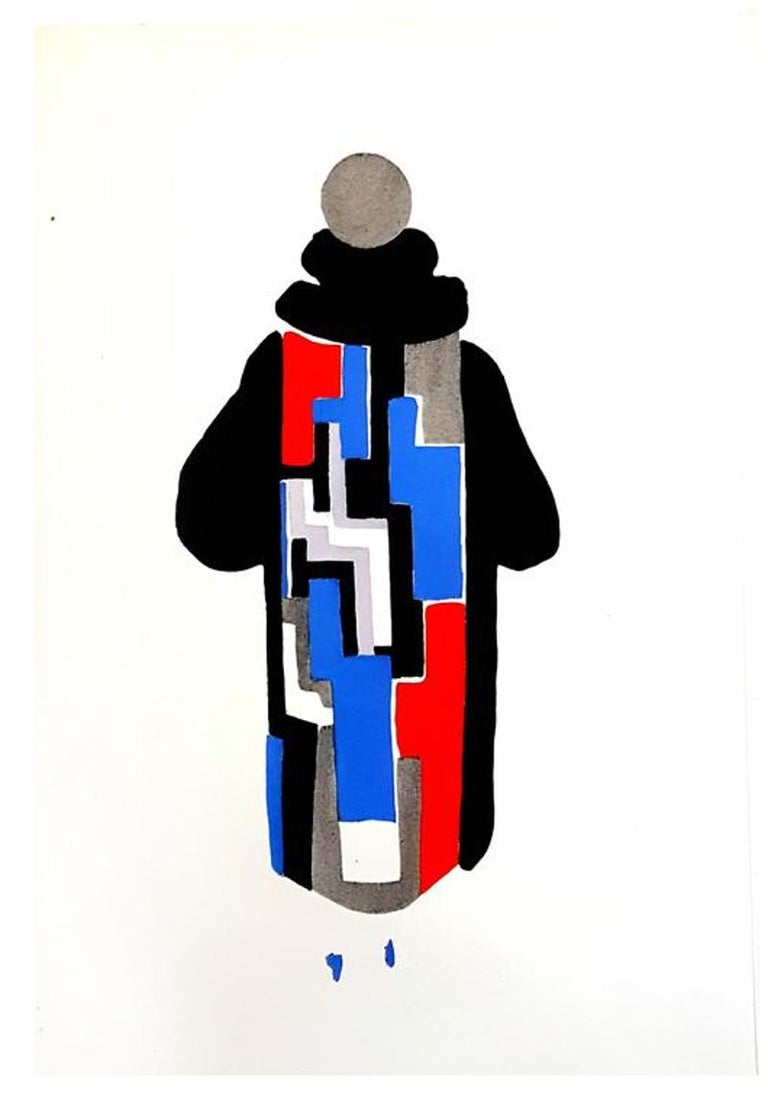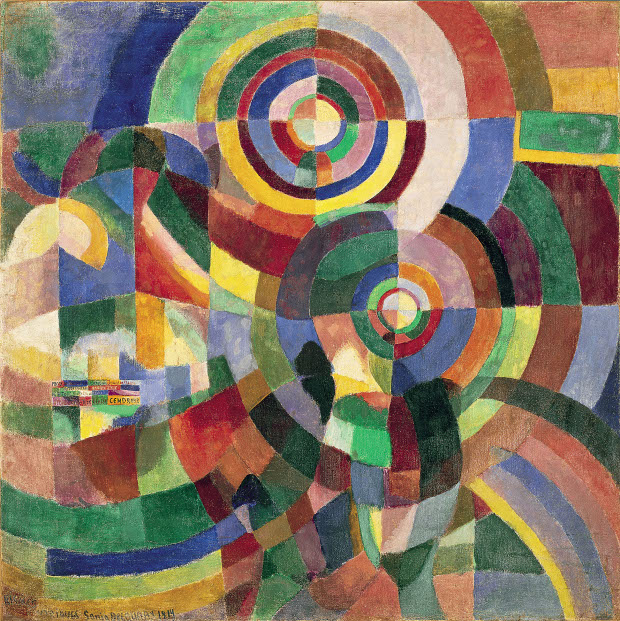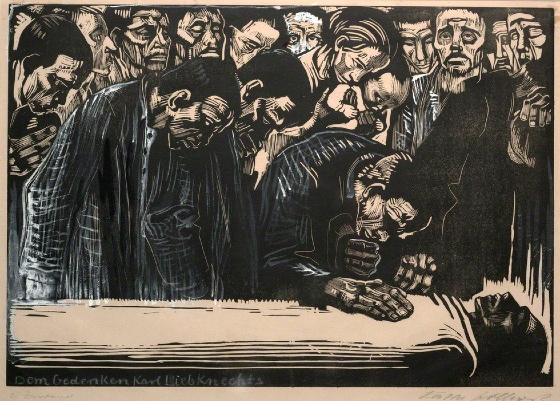Modernism is a movement made up of many other movements, which, in my opinion, was a natural reaction of what could have been labeled a radical time. Modernism became a push to challenge the systems in place and the way people thought and viewed things. As the guerilla girls stated in their bedside companion book, where yes, the 20th century still had a lot of its issues, “in the 20th century, women won rights never given to them before, including the right to vote. With more freedom, more women have become artists” (59), while I also want to note this did not include all women.
Women artists in Europe had very much influenced the techniques and development of modernism and the movements of abstraction, German expressionism, dada and surrealism, and other movements in modernism. For example, we can take a look at Gabriele Münter’s Portrait of Marianne von Werefkin, 1909, and also Road in a Multicolored October, 1959 (linked here).
 |
| Gabriele Münter Road in a Multicolored October, 1959. |
 |
| Gabriele Münter Portrait of Marianne von Werefkin, 1909. |
Gabriele was married to Kadinsky and greatly influenced him, and movements like abstractionism. While still exemplifying ideas of impressionism, as in her heavy brush strokes and the texture of the paint, she flattens the plane of her image and begins outlining with a thick black line. This experiment flattening of space became a significant influence and paved the way for abstractionism.
Another place that we can see the influence of European women artists in the techniques and development of modernism is in fashion! Fashion is an excellent example of modernism, as Chadwick explains, “Modernity is both linked to the desire for the new that fashion expresses so well, and culturally tied to the development of a new visual language for the twentieth century-abstraction.” (253) from Women, Art, and Society. Fashion became a representation of that push, to overthrow the usual way of thinking and dressing, like restrictive corsets.
One great example of this is Sonia Delaunay and her influence within other art mediums like fashion! While Delaunay worked with decorative arts too, she did have much impact on clothes as well. Delaunay experiments greatly with color and shapes, and then mediums, which leads her to the world of fashion. Her ideas on breaking up shapes and using bold colors then transferred to other mediums like decorative arts, fashion, and even cars!
 |
| Sonia Delaunay Appliquéd Coat, 1920's. |
 |
| Sonia Delaunay Electric Prisms, 1914. |
These are only a few ways in which women artists influenced movements like modernism, and solely focuses on the formation of said movements, it is important to note that women continued to have influence (always have and still do) through these movements.
There were important circumstances that aided these movements and made women integral in applying the techniques of design and craft in these new approaches to art. For example, in the early 20th century, we have the industrial revolution, where things are starting to become mechanized, and we are turned towards mass production. We also have World War I in the early 20th century, which significantly influences the lives of individuals all over the world. While obviously, the war has an impact on day to day life, it also impacts art. There are a few things to unpack in this. First, we have the industrial revolution, and we get a new philosophy on mechanization, what the human body is what the machine is, and how this plays a role in everyday life. Things are cheaper to make, and propaganda is easy to show with the invention of the steam press, where you can easily print posters and plaster them across spaces. As we see in Käthe Kollwitz, Memorial Sheet of Karl Liebknecht, 1919. The invention of the steam press allowed for this easy printing and spreading; thus, it became an excellent medium for artists to propagate their works.
 |
| Käthe Kollwitz, Memorial Sheet of Karl Liebknecht, 1919. |
 |
| Hannah Hoch Marlene Dietrich, 1930. |
 |
| Cindy Sherman Untitled, 1979. |
For example, let’s take a look at Cindy Sherman’s Untitled photograph from 1979, and we can compare this to the art piece we just looked at with Hannah Hoch Marlene Dietrich, 1930. Here we see the same type of commentary, where the woman in the photograph has this vacant look on her face, in her underwear. Cindy Sherman is critical of how women are treated and viewed in entertainment/media, and thus creates this photograph as a response to this, just as Hoch did in 1930 with Marlene Dietrich. While this is similar, there are also dissimilarities in Modernism and Post-modernism. For example, post-modernism acknowledges that not everyone is currently included in the art world, and many views and perspectives have been oppressed by things like modernism. This new movement attempts to bring them to light. All in all, post-modernism I would describe as the movement of questioning, questioning why things are the way they are, and pushing the boundaries on that.
Works Cited
Chadwick, Whitney. Women, Art, and Society. Langara College, 2016.The Guerrilla Girls Bedside Companion to the History of Western Art. Penguin Books, 2006.
No comments:
Post a Comment